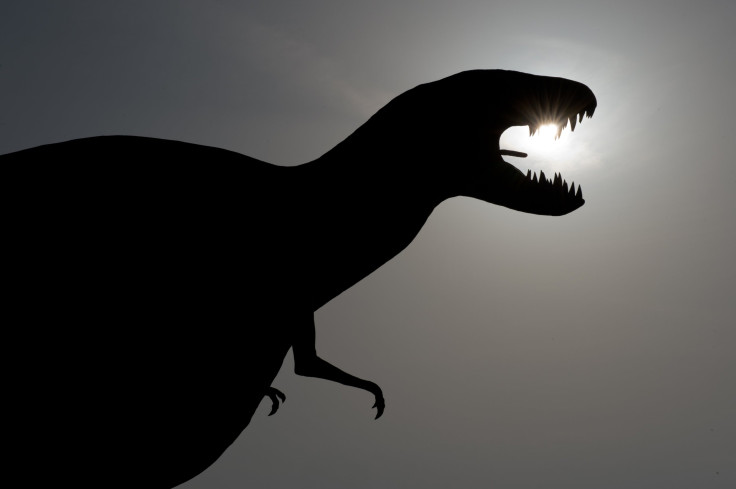New Dinosaur Tracks Discovered, Revealing Different Lifestyle Of Jurassic Period Animals

Scientists have discovered an immense trove of dinosaur tracks -- some a whopping 28 inches in diameter -- from the Jurassic period that show dinosaurs called sauropods waded through shallow water in a lagoon 170 million years ago, Reuters reported Tuesday. The footprints were discovered in what is now the Isle of Skye, Scotland’s largest island.
"There were clearly lots of sauropods moving all around this lagoon. They were at home there, they were thriving there. Looking at the chaotic jumble of tracks, it looks like a dance floor, like a dinosaur disco," said University of Edinburgh paleontologist Steve Brusatte, Reuters reported.
Saurpods -- four-legged plant-eaters with long necks and tails, estimated to have been 50 feet long and 15 to 20 tons --were previously assumed to be land dwellers, according to Popular Science. The newly found footprints in the lagoon-type sediments, however, provide evidence that the dinosaurs spent some time in the water.
Did dinosaurs once roam Scotland? Footprints indicate yes: https://t.co/kFUeDEpOBu
— National Geographic (@NatGeo) December 1, 2015
"Maybe these lagoons were a ready source of food, or offered protection from predators. But regardless of the answer, this discovery and the other recent ones are inspiring us to reimagine the lifestyles of these most incredible of ancient creatures," Brusatte said, Reuters reported.
The collection of tracks found in the Isle of Skye forms the largest dinosaur site ever discovered in Scotland, National Geographic reported. The hundreds of tracks were found in an area reportedly measuring 49 feet by 82 feet. The tracks are also significant because they date back to the Middle Jurassic -- 176 million to 161 million years ago -- which is “is one of the most poorly understood time intervals in dinosaur evolution,” Brusatte said, National Geographic reported. The footprints are valuable in terms of learning about which dinosaurs lived in that area and how they behaved during that time period.
The findings were published in the Scottish Journal of Geology.
© Copyright IBTimes 2025. All rights reserved.






















